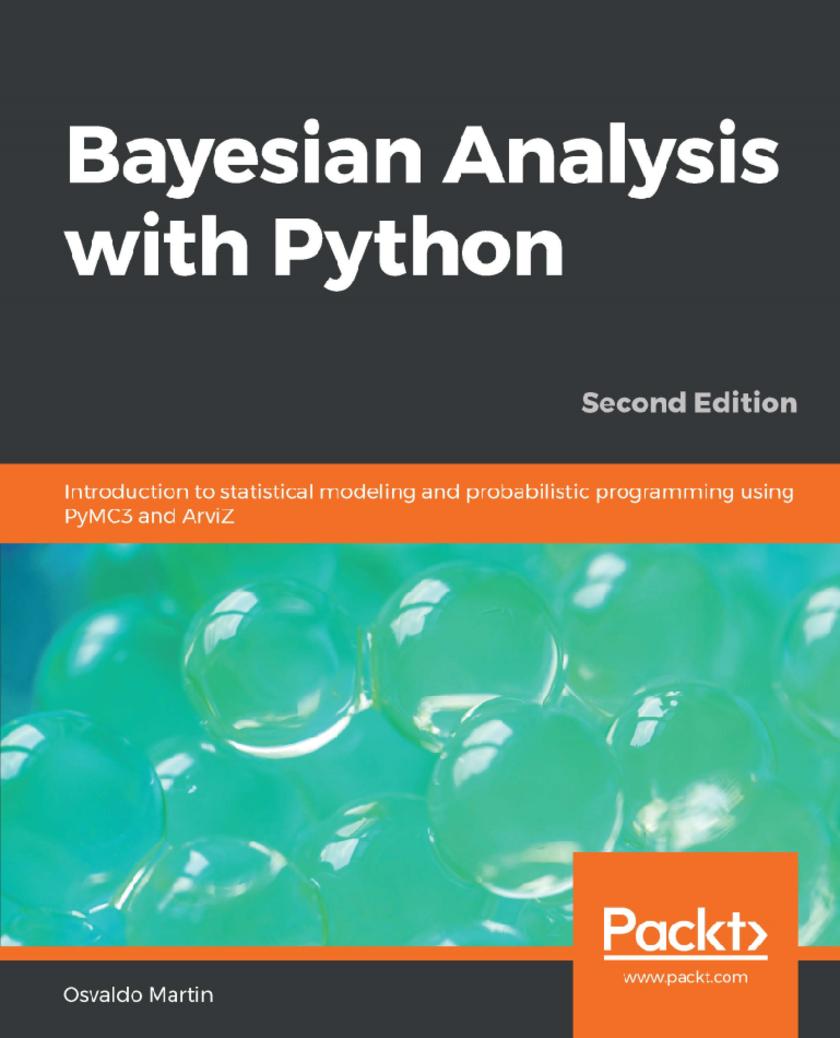
Bayesian Analysis with Python
¥81.74
Bayesian modeling with PyMC3 and exploratory analysis of Bayesian models with ArviZ Key Features *A step-by-step guide to conduct Bayesian data analyses using PyMC3 and ArviZ *A modern, practical and computational approach to Bayesian statistical modeling *A tutorial for Bayesian analysis and best practices with the help of sample problems and practice exercises. Book Description The second edition of Bayesian Analysis with Python is an introduction to the main concepts of applied Bayesian inference and its practical implementation in Python using PyMC3, a state-of-the-art probabilistic programming library, and ArviZ, a new library for exploratory analysis of Bayesian models. The main concepts of Bayesian statistics are covered using a practical and computational approach. Synthetic and real data sets are used to introduce several types of models, such as generalized linear models for regression and classification, mixture models, hierarchical models, and Gaussian processes, among others. By the end of the book, you will have a working knowledge of probabilistic modeling and you will be able to design and implement Bayesian models for your own data science problems. After reading the book you will be better prepared to delve into more advanced material or specialized statistical modeling if you need to. What you will learn *Build probabilistic models using the Python library PyMC3 *Analyze probabilistic models with the help of ArviZ *Acquire the skills required to sanity check models and modify them if necessary *Understand the advantages and caveats of hierarchical models *Find out how different models can be used to answer different data analysis questions *Compare models and choose between alternative ones *Discover how different models are unified from a probabilistic perspective *Think probabilistically and benefit from the flexibility of the Bayesian framework Who this book is for If you are a student, data scientist, researcher, or a developer looking to get started with Bayesian data analysis and probabilistic programming, this book is for you. The book is introductory so no previous statistical knowledge is required, although some experience in using Python and NumPy is expected.
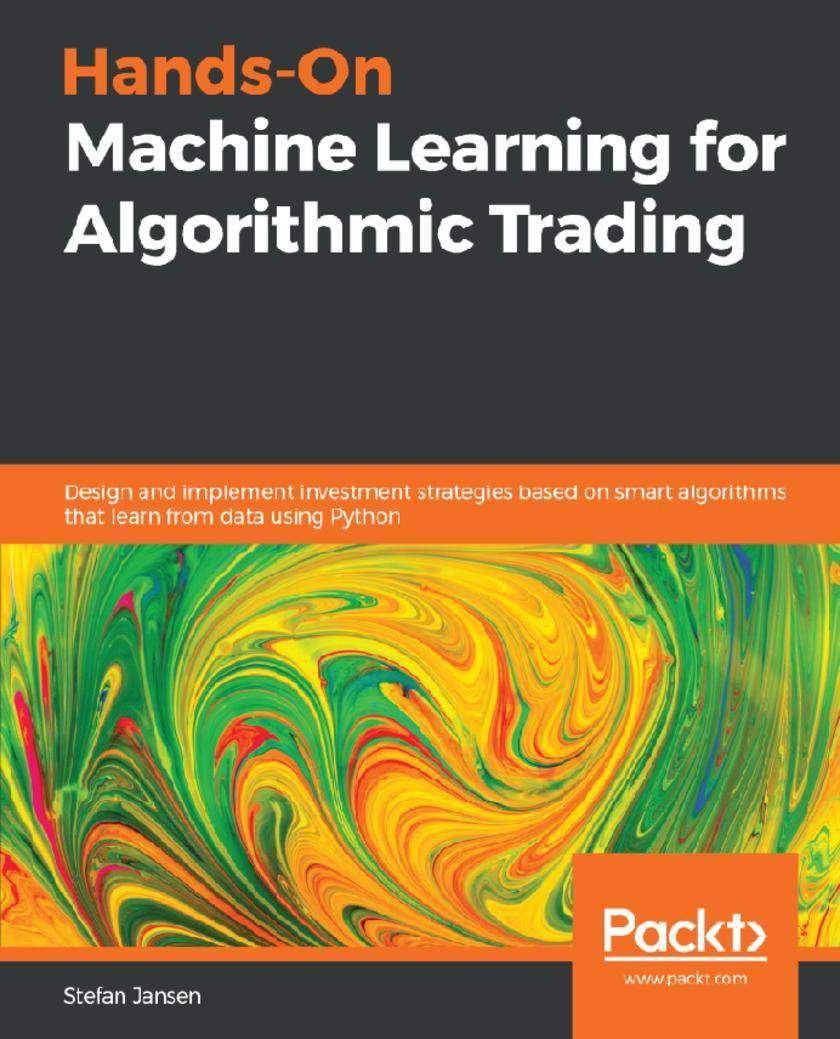
Hands-On Machine Learning for Algorithmic Trading
¥81.74
Explore effective trading strategies in real-world markets using NumPy, spaCy, pandas, scikit-learn, and Keras Key Features *Implement machine learning algorithms to build, train, and validate algorithmic models *Create your own algorithmic design process to apply probabilistic machine learning approaches to trading decisions *Develop neural networks for algorithmic trading to perform time series forecasting and smart analytics Book Description The explosive growth of digital data has boosted the demand for expertise in trading strategies that use machine learning (ML). This book enables you to use a broad range of supervised and unsupervised algorithms to extract signals from a wide variety of data sources and create powerful investment strategies. This book shows how to access market, fundamental, and alternative data via API or web scraping and offers a framework to evaluate alternative data. You’ll practice the ML work?ow from model design, loss metric definition, and parameter tuning to performance evaluation in a time series context. You will understand ML algorithms such as Bayesian and ensemble methods and manifold learning, and will know how to train and tune these models using pandas, statsmodels, sklearn, PyMC3, xgboost, lightgbm, and catboost. This book also teaches you how to extract features from text data using spaCy, classify news and assign sentiment scores, and to use gensim to model topics and learn word embeddings from financial reports. You will also build and evaluate neural networks, including RNNs and CNNs, using Keras and PyTorch to exploit unstructured data for sophisticated strategies. Finally, you will apply transfer learning to satellite images to predict economic activity and use reinforcement learning to build agents that learn to trade in the OpenAI Gym. What you will learn *Implement machine learning techniques to solve investment and trading problems *Leverage market, fundamental, and alternative data to research alpha factors *Design and fine-tune supervised, unsupervised, and reinforcement learning models *Optimize portfolio risk and performance using pandas, NumPy, and scikit-learn *Integrate machine learning models into a live trading strategy on Quantopian *Evaluate strategies using reliable backtesting methodologies for time series *Design and evaluate deep neural networks using Keras, PyTorch, and TensorFlow *Work with reinforcement learning for trading strategies in the OpenAI Gym Who this book is for Hands-On Machine Learning for Algorithmic Trading is for data analysts, data scientists, and Python developers, as well as investment analysts and portfolio managers working within the finance and investment industry. If you want to perform efficient algorithmic trading by developing smart investigating strategies using machine learning algorithms, this is the book for you. Some understanding of Python and machine learning techniques is mandatory.
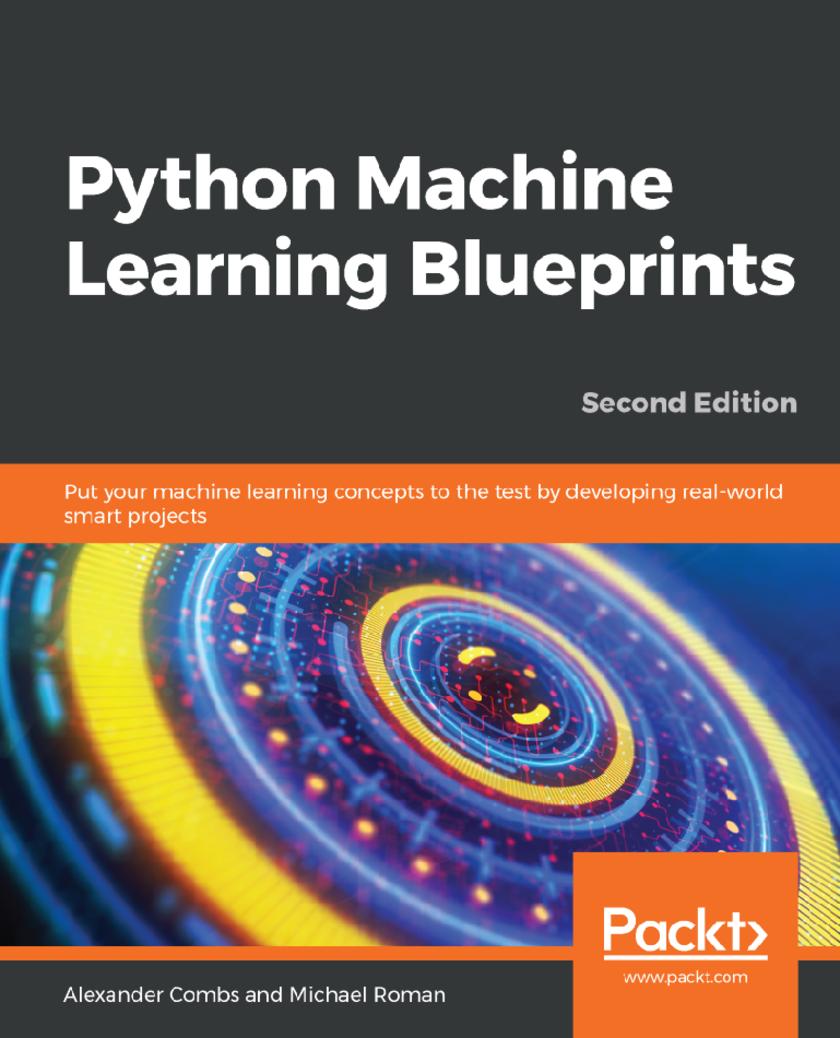
Python Machine Learning Blueprints
¥81.74
Discover a project-based approach to mastering machine learning concepts by applying them to everyday problems using libraries such as scikit-learn, TensorFlow, and Keras Key Features * Get to grips with Python's machine learning libraries including scikit-learn, TensorFlow, and Keras * Implement advanced concepts and popular machine learning algorithms in real-world projects * Build analytics, computer vision, and neural network projects Book Description Machine learning is transforming the way we understand and interact with the world around us. This book is the perfect guide for you to put your knowledge and skills into practice and use the Python ecosystem to cover key domains in machine learning. This second edition covers a range of libraries from the Python ecosystem, including TensorFlow and Keras, to help you implement real-world machine learning projects. The book begins by giving you an overview of machine learning with Python. With the help of complex datasets and optimized techniques, you’ll go on to understand how to apply advanced concepts and popular machine learning algorithms to real-world projects. Next, you’ll cover projects from domains such as predictive analytics to analyze the stock market and recommendation systems for GitHub repositories. In addition to this, you’ll also work on projects from the NLP domain to create a custom news feed using frameworks such as scikit-learn, TensorFlow, and Keras. Following this, you’ll learn how to build an advanced chatbot, and scale things up using PySpark. In the concluding chapters, you can look forward to exciting insights into deep learning and you'll even create an application using computer vision and neural networks. By the end of this book, you’ll be able to analyze data seamlessly and make a powerful impact through your projects. What you will learn * Understand the Python data science stack and commonly used algorithms * Build a model to forecast the performance of an Initial Public Offering (IPO) over an initial discrete trading window * Understand NLP concepts by creating a custom news feed * Create applications that will recommend GitHub repositories based on ones you’ve starred, watched, or forked * Gain the skills to build a chatbot from scratch using PySpark * Develop a market-prediction app using stock data * Delve into advanced concepts such as computer vision, neural networks, and deep learning Who this book is for This book is for machine learning practitioners, data scientists, and deep learning enthusiasts who want to take their machine learning skills to the next level by building real-world projects. The intermediate-level guide will help you to implement libraries from the Python ecosystem to build a variety of projects addressing various machine learning domains. Knowledge of Python programming and machine learning concepts will be helpful.
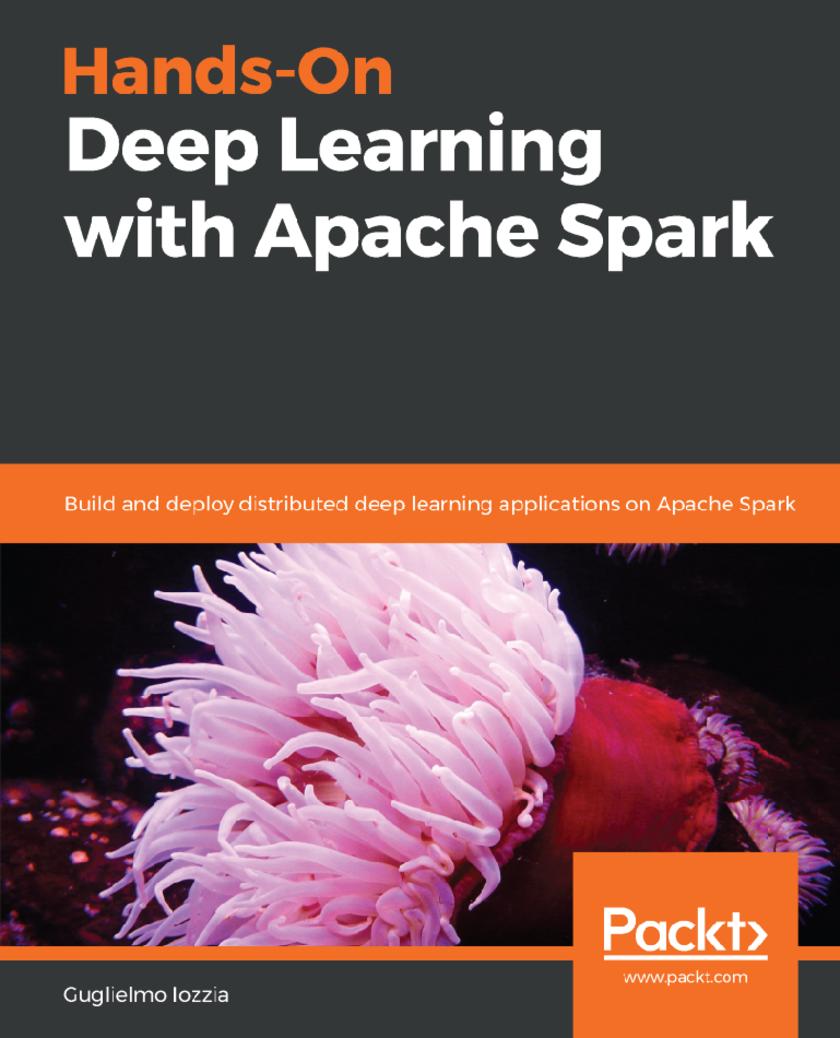
Hands-On Deep Learning with Apache Spark
¥81.74
Speed up the design and implementation of deep learning solutions using Apache Spark Key Features * Explore the world of distributed deep learning with Apache Spark * Train neural networks with deep learning libraries such as BigDL and TensorFlow * Develop Spark deep learning applications to intelligently handle large and complex datasets Book Description Deep learning is a subset of machine learning where datasets with several layers of complexity can be processed. Hands-On Deep Learning with Apache Spark addresses the sheer complexity of technical and analytical parts and the speed at which deep learning solutions can be implemented on Apache Spark. The book starts with the fundamentals of Apache Spark and deep learning. You will set up Spark for deep learning, learn principles of distributed modeling, and understand different types of neural nets. You will then implement deep learning models, such as convolutional neural networks (CNNs), recurrent neural networks (RNNs), and long short-term memory (LSTM) on Spark. As you progress through the book, you will gain hands-on experience of what it takes to understand the complex datasets you are dealing with. During the course of this book, you will use popular deep learning frameworks, such as TensorFlow, Deeplearning4j, and Keras to train your distributed models. By the end of this book, you'll have gained experience with the implementation of your models on a variety of use cases. What you will learn * Understand the basics of deep learning * Set up Apache Spark for deep learning * Understand the principles of distribution modeling and different types of neural networks * Obtain an understanding of deep learning algorithms * Discover textual analysis and deep learning with Spark * Use popular deep learning frameworks, such as Deeplearning4j, TensorFlow, and Keras * Explore popular deep learning algorithms Who this book is for If you are a Scala developer, data scientist, or data analyst who wants to learn how to use Spark for implementing efficient deep learning models, Hands-On Deep Learning with Apache Spark is for you. Knowledge of the core machine learning concepts and some exposure to Spark will be helpful.
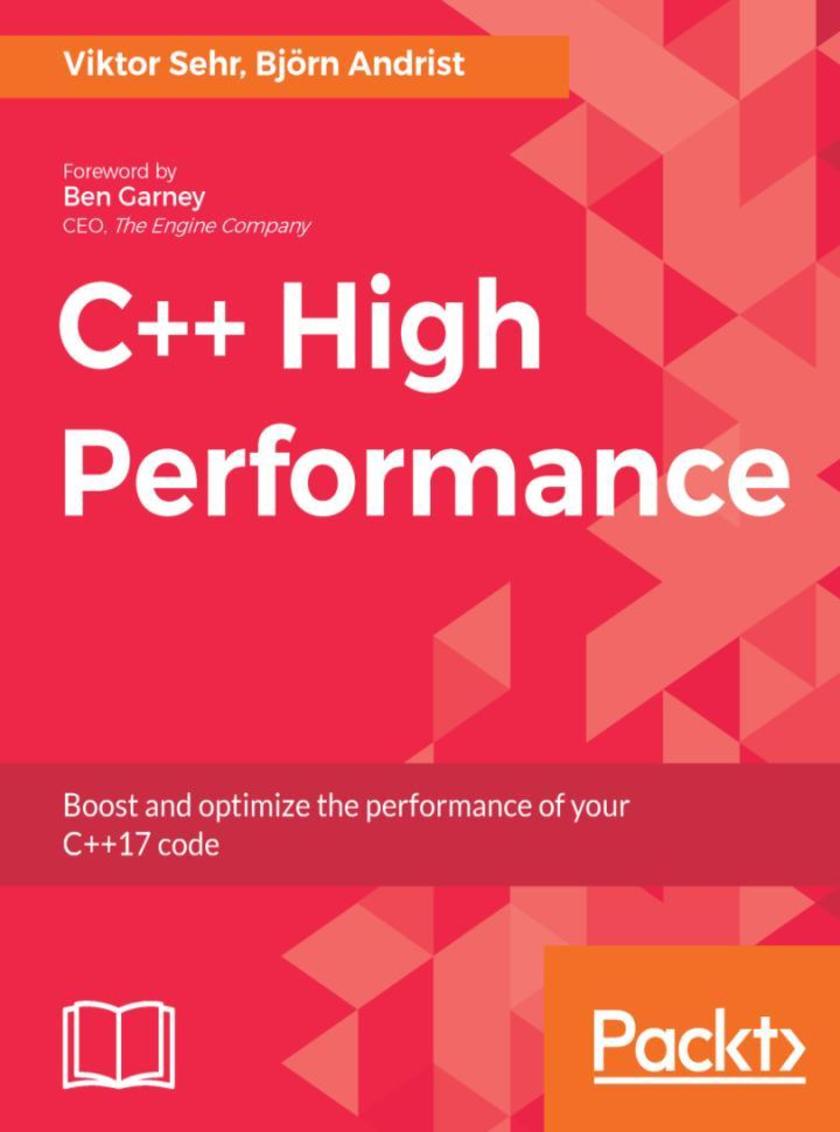
C++ High Performance
¥81.74
Write code that scales across CPU registers, multi-core, and machine clusters About This Book ? Explore concurrent programming in C++ ? Identify memory management problems ? Use SIMD and STL containers for performance improvement Who This Book Is For If you're a C++ developer looking to improve the speed of your code or simply wanting to take your skills up to the next level, then this book is perfect for you. What You Will Learn ? Find out how to use exciting new tools that will help you improve your code ? Identify bottlenecks to optimize your code ? Develop applications that utilize GPU computation ? Reap the benefits of concurrent programming ? Write code that can protect against application errors using error handling ? Use STL containers and algorithms effciently ? Extend your toolbox with Boost containers ? Achieve effcient memory management by using custom memory allocators In Detail C++ is a highly portable language and can be used to write complex applications and performance-critical code. It has evolved over the last few years to become a modern and expressive language. This book will guide you through optimizing the performance of your C++ apps by allowing them to run faster and consume fewer resources on the device they're running on. The book begins by helping you to identify the bottlenecks in C++. It then moves on to measuring performance, and you'll see how this affects the way you write code. Next, you'll see the importance of data structure optimization and how it can be used efficiently. After that, you'll see which algorithm should be used to achieve faster execution, followed by how to use STL containers. Moving on, you'll learn how to improve memory management in C++. You'll get hands on experience making use of multiple cores to enable more efficient and faster execution. The book ends with a brief overview of utilizing the capabilities of your GPU by using Boost Compute and OpenCL. Style and approach This easy-to-follow guide is full of examples and self-sufficient code snippets that help you with high performance programming with C++. You’ll get your hands dirty with this all-inclusive guide that uncovers hidden performance improvement areas for any C++ code.
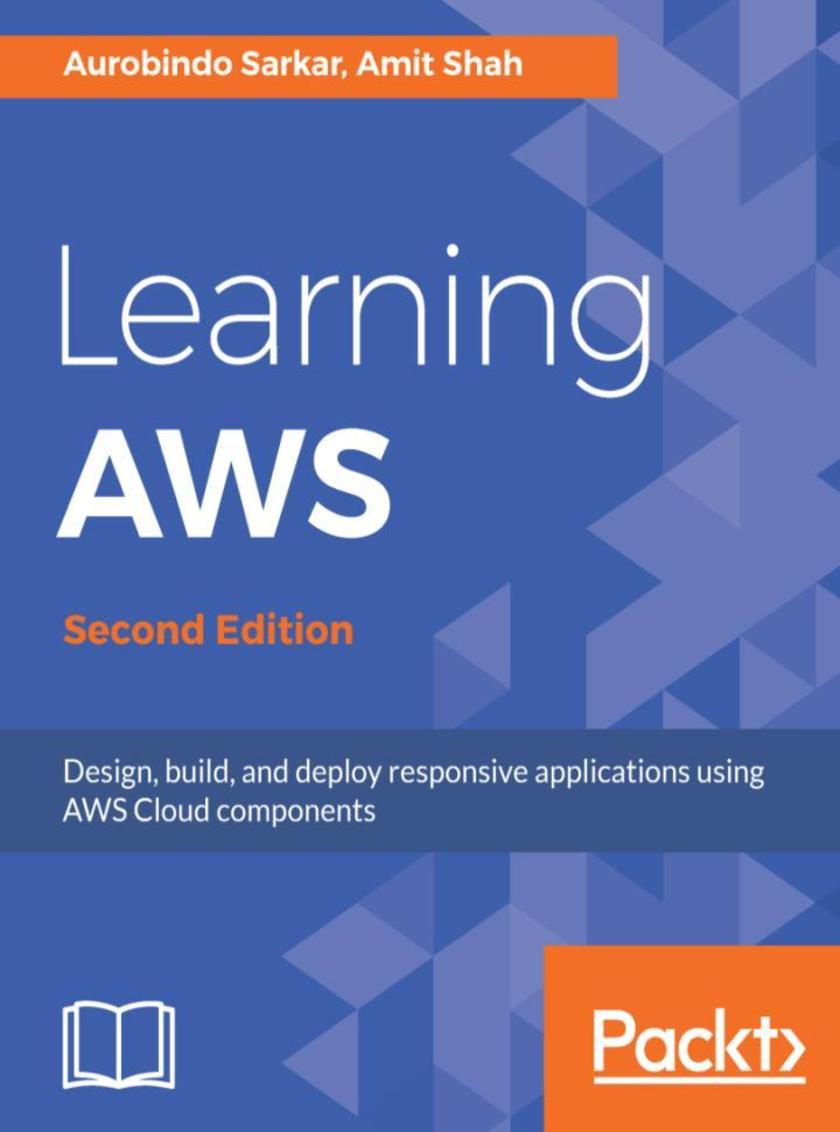
Learning AWS - Second Edition
¥81.74
Discover techniques and tools for building serverless applications with AWS About This Book ? Get well-versed with building and deploying serverless APIs with microservices ? Learn to build distributed applications and microservices with AWS Step Functions ? A step-by-step guide that will get you up and running with building and managing applications on the AWS platform Who This Book Is For If you are an I.T. professional or a system architect who wants to improve infrastructure using AWS, then this book is for you. It is also for programmers who are new to AWS and want to build highly efficient, scalable applications. What You Will Learn ? Set up your AWS account and get started with the basic concepts of AWS ? Learn about AWS terminology and identity access management ? Acquaint yourself with important elements of the cloud with features such as computing, ELB, and VPC ? Back up your database and ensure high availability by having an understanding of database-related services in the AWS cloud ? Integrate AWS services with your application to meet and exceed non-functional requirements ? Create and automate infrastructure to design cost-effective, highly available applications In Detail Amazon Web Services (AWS) is the most popular and widely-used cloud platform. Administering and deploying application on AWS makes the applications resilient and robust. The main focus of the book is to cover the basic concepts of cloud-based development followed by running solutions in AWS Cloud, which will help the solutions run at scale. This book not only guides you through the trade-offs and ideas behind efficient cloud applications, but is a comprehensive guide to getting the most out of AWS. In the first section, you will begin by looking at the key concepts of AWS, setting up your AWS account, and operating it. This guide also covers cloud service models, which will help you build highly scalable and secure applications on the AWS platform. We will then dive deep into concepts of cloud computing with S3 storage, RDS and EC2. Next, this book will walk you through VPC, building realtime serverless environments, and deploying serverless APIs with microservices. Finally, this book will teach you to monitor your applications, and automate your infrastructure and deploy with CloudFormation. By the end of this book, you will be well-versed with the various services that AWS provides and will be able to leverage AWS infrastructure to accelerate the development process. Style and approach ? Learn to write, run, and deploy applications in the AWS cloud ? Make the most of AWS to build scalable and cost-efficient systems ? A practical guide to developing serverless services and make the applications run faster
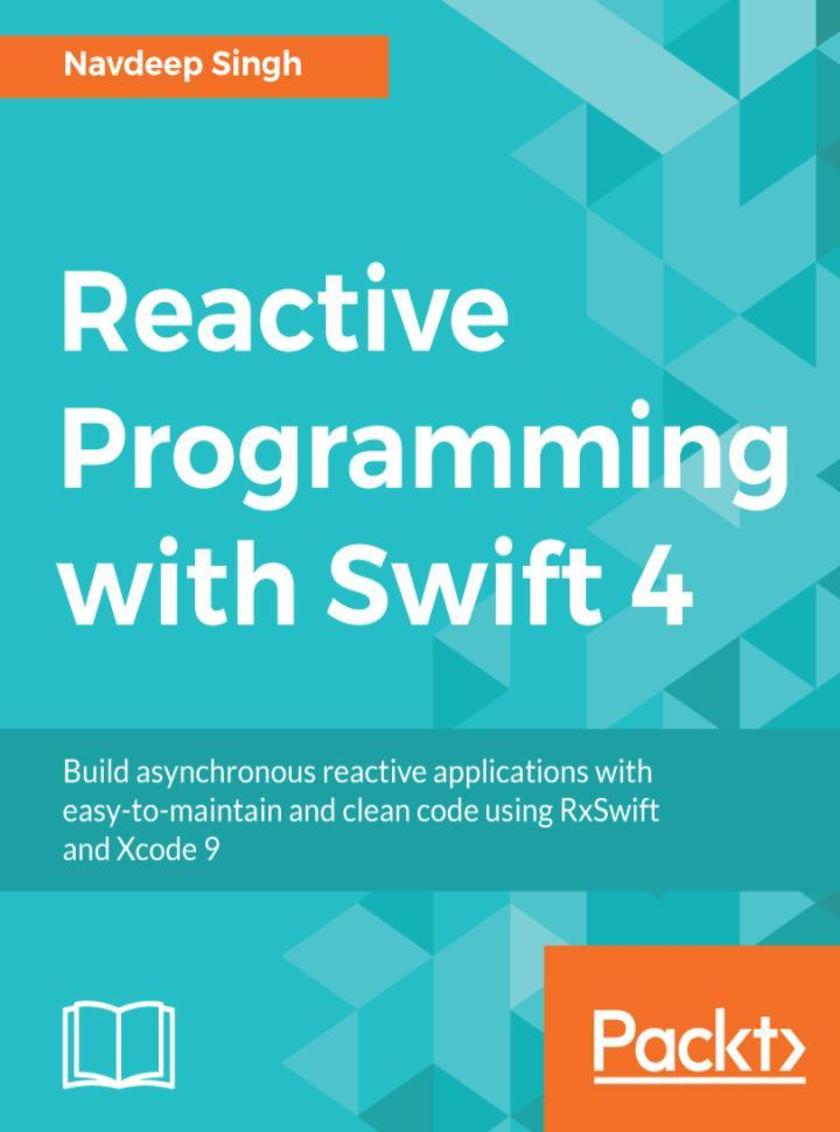
Reactive Programming with Swift 4
¥81.74
Learn how to solve blocking user experience and build event based reactive applications with Swift. About This Book ? Build fast and scalable apps with RxSwift ? Apply reactive programming to solve complex problems and build efficient programs with reactive user interfaces ? Take expressiveness, scalability, and maintainability of your Swift code to the next level with this practical guide Who This Book Is For This book is for the developers who are familiar with Swift and iOS application development and are looking out to reduce the complexity of their apps. Prior experience of reactive programming is not necessary. What You Will Learn ? Understand the practical benefits of Rx on a mobile platform ? Explore the building blocks of Rx, and Rx data flows with marble diagrams ? Learn how to convert an existing code base into RxSwift code base ? Learn how to debug and test your Rx Code ? Work with Playgrounds to transform sequences by filtering them using map, flatmap and other operators ? Learn how to combine different operators to work with Events in a more controlled manner. ? Discover RxCocoa and convert your simple UI elements to Reactive components ? Build a complete RxSwift app using MVVM as design pattern In Detail RxSwift belongs to a large family of Rx implementations in different programming languages that share almost identical syntax and semantics. Reactive approach will help you to write clean, cohesive, resilient, scalable, and maintainable code with highly configurable behavior. This book will introduce you to the world of reactive programming, primarily focusing on mobile platforms. It will tell how you can benefit from using RxSwift in your projects, existing or new. Further on, the book will demonstrate the unbelievable ease of configuring asynchronous behavior and other aspects of the app that are traditionally considered to be hard to implement and maintain. It will explain what Rx is made of, and how to switch to reactive way of thinking to get the most out of it. Also, test production code using RxTest and the red/ green approach. Finally, the book will dive into real-world recipes and show you how to build a real-world app by applying the reactive paradigm. By the end of the book, you’ll be able to build a reactive swift application by leveraging all the concepts this book takes you through. Style and approach This book is a definite tutorial in FRP with Swift filled with well-described examples.
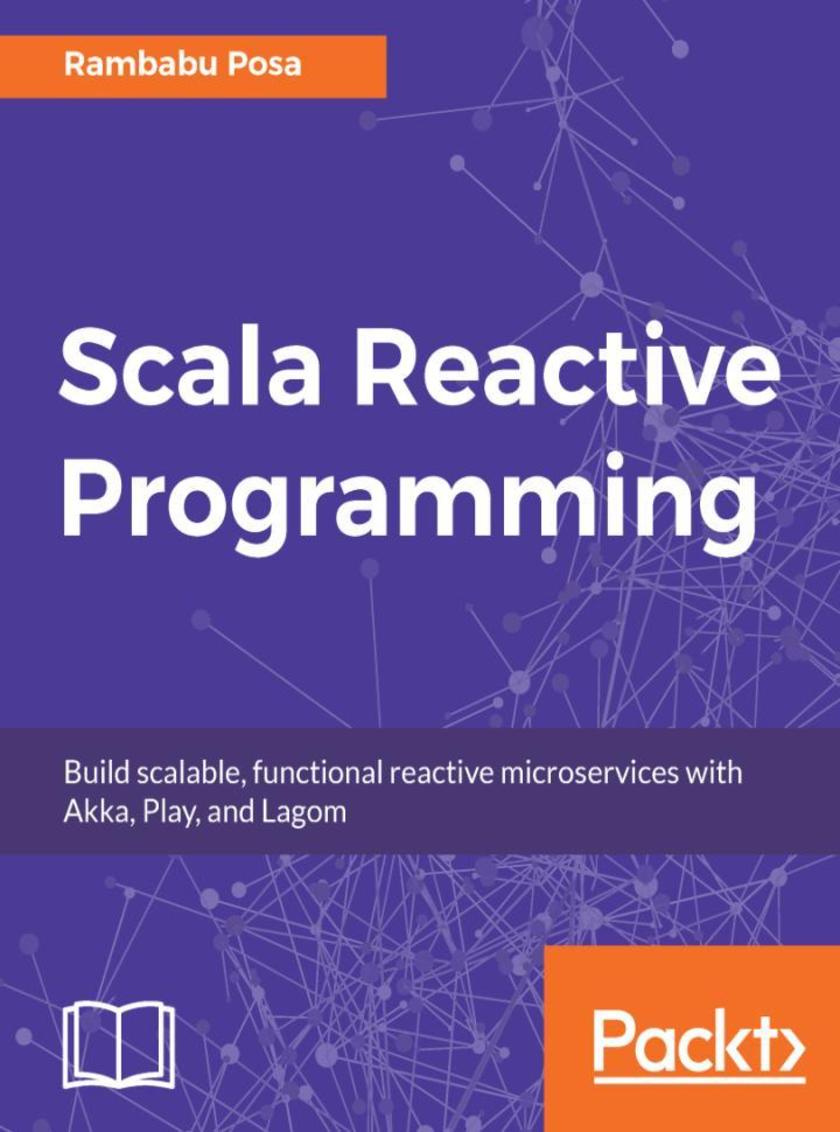
Scala Reactive Programming
¥81.74
Build fault-tolerant, robust, and distributed applications in Scala About This Book ? Understand and use the concepts of reactive programming to build distributed systems running on multiple nodes. ? Learn how reactive architecture reduces complexity throughout the development process. ? Get to grips with functional reactive programming and Reactive Microservices. Who This Book Is For This book is for Scala developers who would like to build fault-tolerant, scalable distributed systems. No knowledge of Reactive programming is required. What You Will Learn ? Understand the fundamental principles of Reactive and Functional programming ? Develop applications utilizing features of the Akka framework ? Explore techniques to integrate Scala, Akka, and Play together ? Learn about Reactive Streams with real-time use cases ? Develop Reactive Web Applications with Play, Scala, Akka, and Akka Streams ? Develop and deploy Reactive microservices using the Lagom framework and ConductR In Detail Reactive programming is a scalable, fast way to build applications, and one that helps us write code that is concise, clear, and readable. It can be used for many purposes such as GUIs, robotics, music, and others, and is central to many concurrent systems. This book will be your guide to getting started with Reactive programming in Scala. You will begin with the fundamental concepts of Reactive programming and gradually move on to working with asynchronous data streams. You will then start building an application using Akka Actors and extend it using the Play framework. You will also learn about reactive stream specifications, event sourcing techniques, and different methods to integrate Akka Streams into the Play Framework. This book will also take you one step forward by showing you the advantages of the Lagom framework while working with reactive microservices. You will also learn to scale applications using multi-node clusters and test, secure, and deploy your microservices to the cloud. By the end of the book, you will have gained the knowledge to build robust and distributed systems with Scala and Akka. Style and approach The book takes a pragmatic approach, showing you how to build a scalable distributed system using Scala and Akka.

Hands-On Microservices with Kotlin
¥81.74
Build smart, efficient, and fast enterprise-grade web implementation of the microservices architecture that can be easily scaled. About This Book ? Write easy-to-maintain lean and clean code with Kotlin for developing better microservices ? Scale your Microserivces in your own cloud with Docker and Docker Swarm ? Explore Spring 5 functional reactive web programming with Spring WebFlux Who This Book Is For If you are a Kotlin developer with a basic knowledge of microservice architectures and now want to effectively implement these services on enterprise-level web applications, then this book is for you What You Will Learn ? Understand microservice architectures and principles ? Build microservices in Kotlin using Spring Boot 2.0 and Spring Framework 5.0 ? Create reactive microservices that perform non-blocking operations with Spring WebFlux ? Use Spring Data to get data reactively from MongoDB ? Test effectively with JUnit and Kotlin ? Create cloud-native microservices with Spring Cloud ? Build and publish Docker images of your microservices ? Scaling microservices with Docker Swarm ? Monitor microservices with JMX ? Deploy microservices in OpenShift Online In Detail With Google's inclusion of first-class support for Kotlin in their Android ecosystem, Kotlin's future as a mainstream language is assured. Microservices help design scalable, easy-to-maintain web applications; Kotlin allows us to take advantage of modern idioms to simplify our development and create high-quality services. With 100% interoperability with the JVM, Kotlin makes working with existing Java code easier. Well-known Java systems such as Spring, Jackson, and Reactor have included Kotlin modules to exploit its language features. This book guides the reader in designing and implementing services, and producing production-ready, testable, lean code that's shorter and simpler than a traditional Java implementation. Reap the benefits of using the reactive paradigm and take advantage of non-blocking techniques to take your services to the next level in terms of industry standards. You will consume NoSQL databases reactively to allow you to create high-throughput microservices. Create cloud-native microservices that can run on a wide range of cloud providers, and monitor them. You will create Docker containers for your microservices and scale them. Finally, you will deploy your microservices in OpenShift Online. Style and approach This book guides the reader in designing and implementing services, achieving production- ready, testable, easy-to-maintain, lean code that's shorter and simpler than a traditional Java implementation.
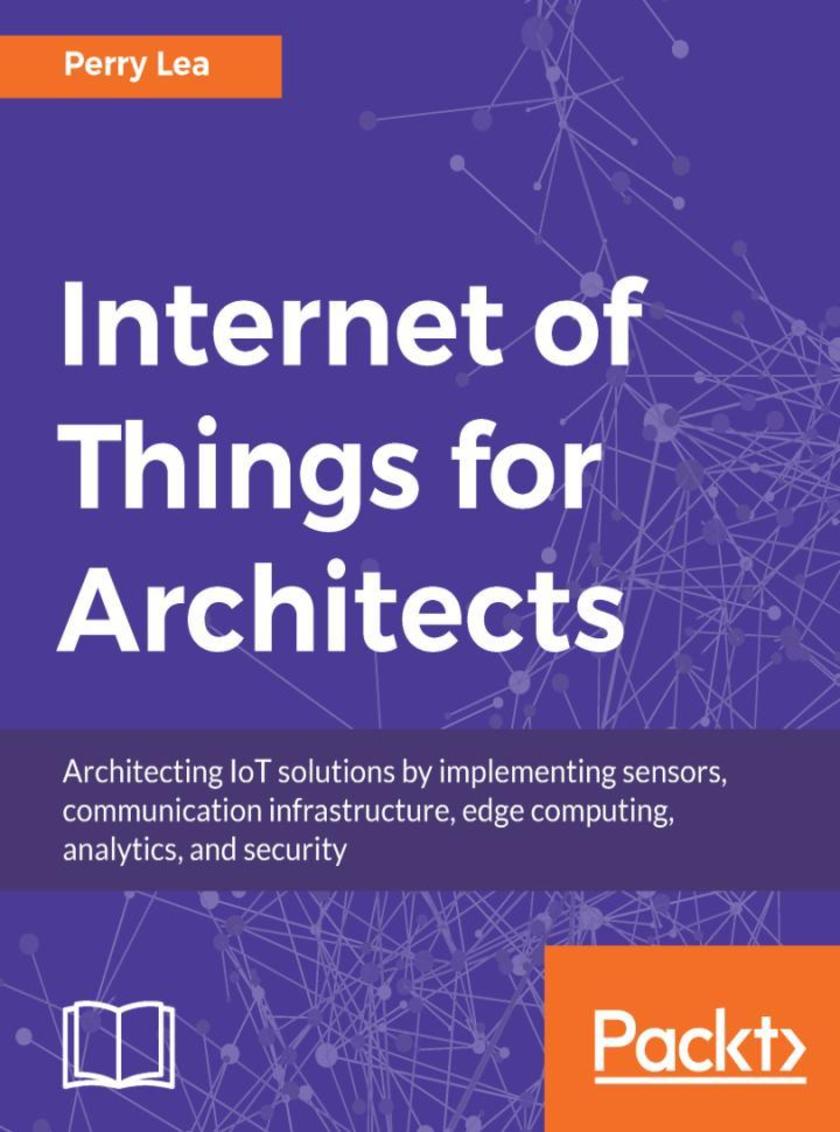
Internet of Things for Architects
¥81.74
Learn to design, implement and secure your IoT infrastructure About This Book ? Build a complete IoT system that is the best fit for your organization ? Learn about different concepts, technologies, and tradeoffs in the IoT architectural stack ? Understand the theory, concepts, and implementation of each element that comprises IoT design—from sensors to the cloud ? Implement best practices to ensure the reliability, scalability, robust communication systems, security, and data analysis in your IoT infrastructure Who This Book Is For This book is for architects, system designers, technologists, and technology managers who want to understand the IoT ecosphere, various technologies, and tradeoffs and develop a 50,000-foot view of IoT architecture. What You Will Learn ? Understand the role and scope of architecting a successful IoT deployment, from sensors to the cloud ? Scan the landscape of IoT technologies that span everything from sensors to the cloud and everything in between ? See the trade-offs in choices of protocols and communications in IoT deployments ? Build a repertoire of skills and the vernacular necessary to work in the IoT space ? Broaden your skills in multiple engineering domains necessary for the IoT architect In Detail The Internet of Things (IoT) is the fastest growing technology market. Industries are embracing IoT technologies to improve operational expenses, product life, and people's well-being. An architectural guide is necessary if you want to traverse the spectrum of technologies needed to build a successful IoT system, whether that's a single device or millions of devices. This book encompasses the entire spectrum of IoT solutions, from sensors to the cloud. We start by examining modern sensor systems and focus on their power and functionality. After that, we dive deep into communication theory, paying close attention to near-range PAN, including the new Bluetooth? 5.0 specification and mesh networks. Then, we explore IP-based communication in LAN and WAN, including 802.11ah, 5G LTE cellular, SigFox, and LoRaWAN. Next, we cover edge routing and gateways and their role in fog computing, as well as the messaging protocols of MQTT and CoAP. With the data now in internet form, you'll get an understanding of cloud and fog architectures, including the OpenFog standards. We wrap up the analytics portion of the book with the application of statistical analysis, complex event processing, and deep learning models. Finally, we conclude by providing a holistic view of the IoT security stack and the anatomical details of IoT exploits while countering them with software defined perimeters and blockchains. Style and approach This hands-on guide combines theory and application to the Internet of Things. This book covers the entire architectural stack of components and engineering domains from sensors to power analysis, communication systems, information theory, networking and routing, data security, protocols, software stacks, cloud mechanics, and data analytics with deep learning.
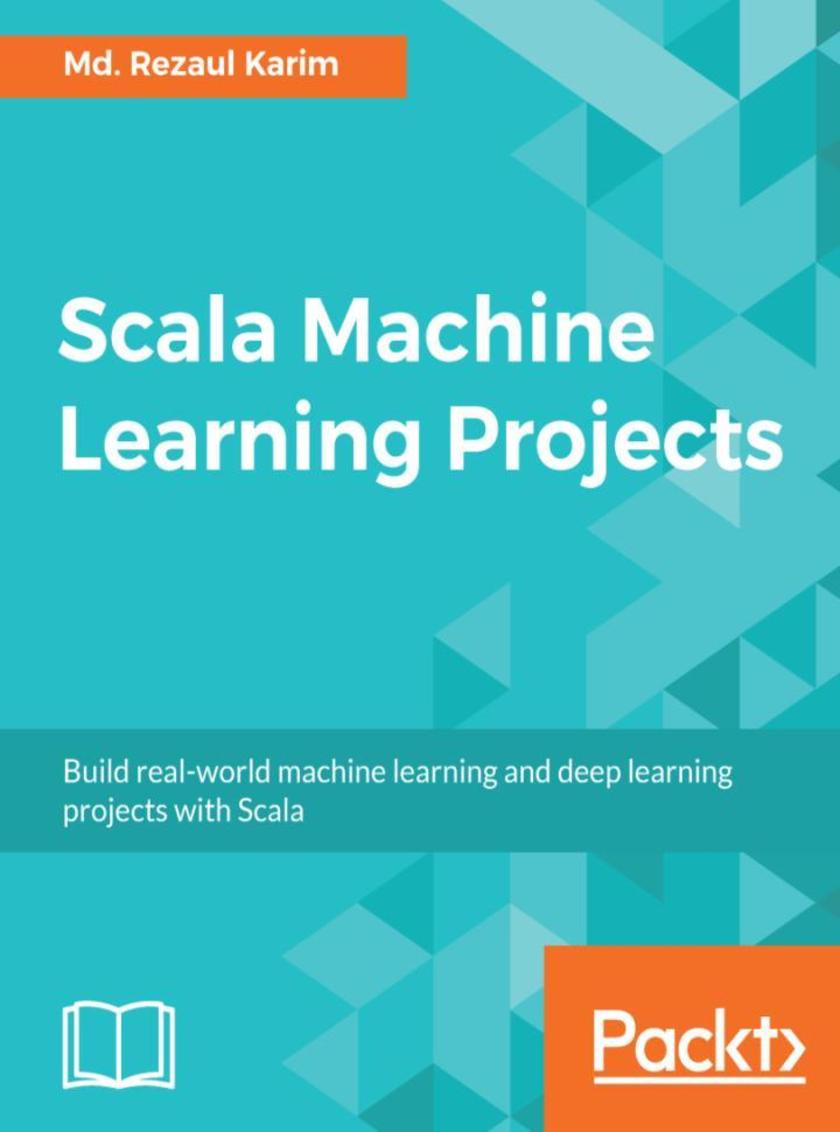
Scala Machine Learning Projects
¥81.74
Powerful smart applications using deep learning algorithms to dominate numerical computing, deep learning, and functional programming. About This Book ? Explore machine learning techniques with prominent open source Scala libraries such as Spark ML, H2O, MXNet, Zeppelin, and DeepLearning4j ? Solve real-world machine learning problems by delving complex numerical computing with Scala functional programming in a scalable and faster way ? Cover all key aspects such as collection, storing, processing, analyzing, and evaluation required to build and deploy machine models on computing clusters using Scala Play framework. Who This Book Is For If you want to leverage the power of both Scala and Spark to make sense of Big Data, then this book is for you. If you are well versed with machine learning concepts and wants to expand your knowledge by delving into the practical implementation using the power of Scala, then this book is what you need! Strong understanding of Scala Programming language is recommended. Basic familiarity with machine Learning techniques will be more helpful. What You Will Learn ? Apply advanced regression techniques to boost the performance of predictive models ? Use different classification algorithms for business analytics ? Generate trading strategies for Bitcoin and stock trading using ensemble techniques ? Train Deep Neural Networks (DNN) using H2O and Spark ML ? Utilize NLP to build scalable machine learning models ? Learn how to apply reinforcement learning algorithms such as Q-learning for developing ML application ? Learn how to use autoencoders to develop a fraud detection application ? Implement LSTM and CNN models using DeepLearning4j and MXNet In Detail Machine learning has had a huge impact on academia and industry by turning data into actionable information. Scala has seen a steady rise in adoption over the past few years, especially in the fields of data science and analytics. This book is for data scientists, data engineers, and deep learning enthusiasts who have a background in complex numerical computing and want to know more hands-on machine learning application development. If you're well versed in machine learning concepts and want to expand your knowledge by delving into the practical implementation of these concepts using the power of Scala, then this book is what you need! Through 11 end-to-end projects, you will be acquainted with popular machine learning libraries such as Spark ML, H2O, DeepLearning4j, and MXNet. At the end, you will be able to use numerical computing and functional programming to carry out complex numerical tasks to develop, build, and deploy research or commercial projects in a production-ready environment. Style and approach Leverage the power of machine learning and deep learning in different domains, giving best practices and tips from a real world case studies and help you to avoid pitfalls and fallacies towards decision making based on predictive analytics with ML models.
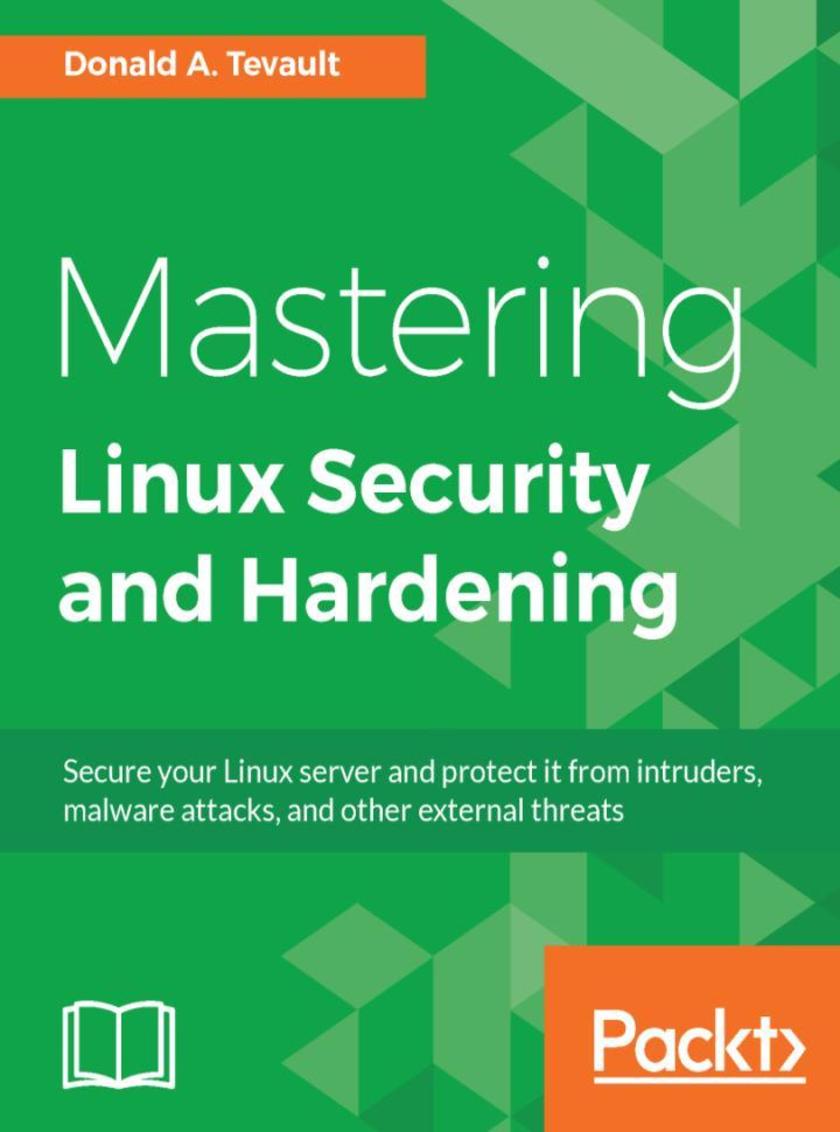
Mastering Linux Security and Hardening
¥81.74
A comprehensive guide to mastering the art of preventing your Linux system from getting compromised. About This Book ? Leverage this guide to confidently deliver a system that reduces the risk of being hacked ? Perform a number of advanced Linux security techniques such as network service detection, user authentication, controlling special permissions, encrypting file systems, and much more ? Master the art of securing a Linux environment with this end-to-end practical guide Who This Book Is For If you are a systems administrator or a network engineer interested in making your Linux environment more secure, then this book is for you. Security consultants wanting to enhance their Linux security skills will also benefit from this book. Prior knowledge of Linux is mandatory. What You Will Learn ? Use various techniques to prevent intruders from accessing sensitive data ? Prevent intruders from planting malware, and detect whether malware has been planted ? Prevent insiders from accessing data that they aren’t authorized to access ? Do quick checks to see whether a computer is running network services that it doesn’t need to run ? Learn security techniques that are common to all Linux distros, and some that are distro-specific In Detail This book has extensive coverage of techniques that will help prevent attackers from breaching your system, by building a much more secure Linux environment. You will learn various security techniques such as SSH hardening, network service detection, setting up firewalls, encrypting file systems, protecting user accounts, authentication processes, and so on. Moving forward, you will also develop hands-on skills with advanced Linux permissions, access control, special modes, and more. Lastly, this book will also cover best practices and troubleshooting techniques to get your work done efficiently. By the end of this book, you will be confident in delivering a system that will be much harder to compromise. Style and approach An advanced-level guide filled with real-world examples that will help you secure your Linux system
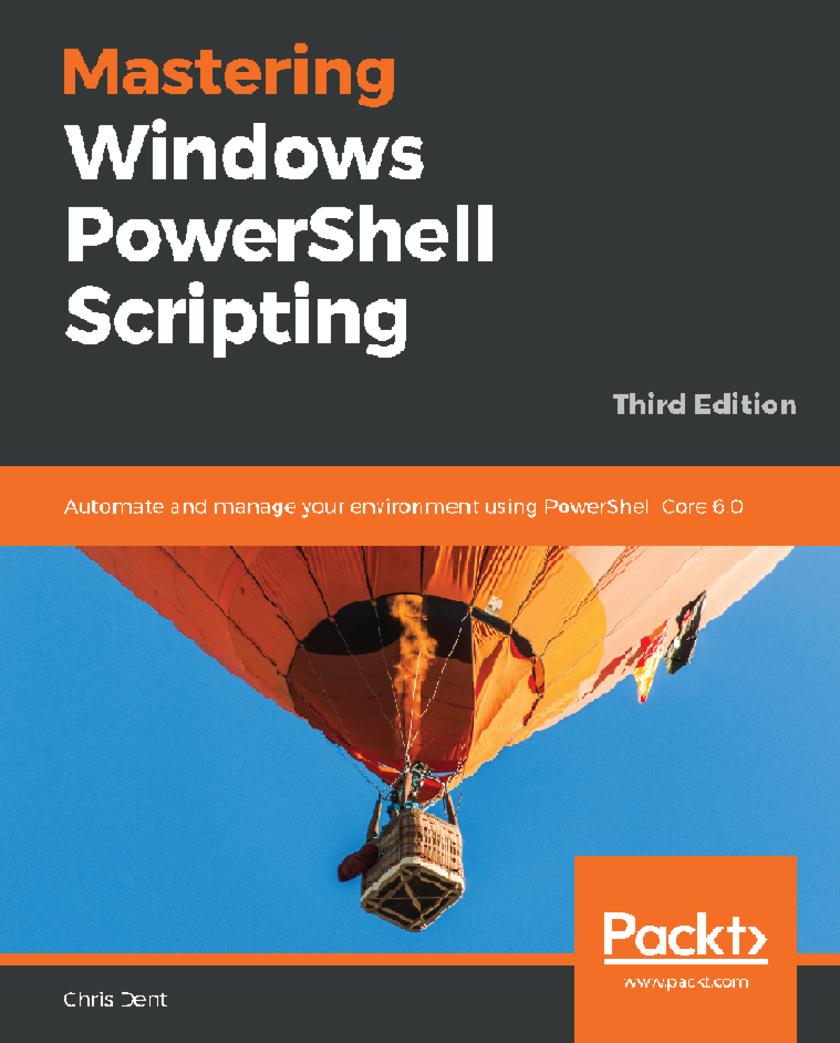
Mastering Windows PowerShell Scripting
¥81.74
Grasp advanced PowerShell Core 6.0 functionalities to automate your environment Key Features * Keep up with changes introduced in PowerShell Core 6.0 * Easily maintain appropriate compatibility with older versions * Automate complex tasks, manipulate data, and secure your environment with PowerShell Core 6.0 Book Description PowerShell scripts offer a handy way to automate various chores, however working effectively with these scripts can be a difficult task. This comprehensive guide starts with the fundamentals before moving on to advanced-level topics to help you become a PowerShell Core 6.0 expert. The first module, PowerShell Core 6.0 Fundamentals, begins with the new features of PowerShell Core 6.0, installing it on Linux, and working with parameters, objects and .NET classes from within PowerShell Core 6.0. As you make your way through the chapters, you'll see how to efficiently manage large amounts of data and interact with other services using PowerShell Core 6.0. You'll be able to make the most of PowerShell Core 6.0's powerful automation feature, where you will have different methods available to parse data and manipulate regular expressions and Windows Management Instrumentation (WMI). After having explored automation, you will enter the extending PowerShell Core 6.0 module, covering asynchronous processing and desired state configuration. In the last module, you will learn to extend PowerShell Core 6.0 using advanced scripts and filters, and also debug issues along with working on error handling techniques. By the end of this book, you will be an expert in scripting with PowerShell Core 6.0. What you will learn * Optimize code through the use of functions, switches, and looping structures * Work with objects and operators to test and manipulate data * Parse and manipulate different data types * Create scripts and functions using PowerShell * Use jobs, events, and popular public modules which assist with implementing multithreading * Write .NET classes with ease within the PowerShell * Create and implement regular expressions in PowerShell scripts * Make use of advanced techniques to define and restrict the behavior of parameters Who this book is for If you are a system administrator who wants to become an expert in controlling and automating your Windows environment, then Mastering Windows PowerShell Scripting is for you. It is also ideal for those new to the PowerShell language.

Hands-On Unsupervised Learning with Python
¥81.74
Discover the skill-sets required to implement various approaches to Machine Learning with Python Key Features * Explore unsupervised learning with clustering, autoencoders, restricted Boltzmann machines, and more * Build your own neural network models using modern Python libraries * Practical examples show you how to implement different machine learning and deep learning techniques Book Description Unsupervised learning is about making use of raw, untagged data and applying learning algorithms to it to help a machine predict its outcome. With this book, you will explore the concept of unsupervised learning to cluster large sets of data and analyze them repeatedly until the desired outcome is found using Python. This book starts with the key differences between supervised, unsupervised, and semi-supervised learning. You will be introduced to the best-used libraries and frameworks from the Python ecosystem and address unsupervised learning in both the machine learning and deep learning domains. You will explore various algorithms, techniques that are used to implement unsupervised learning in real-world use cases. You will learn a variety of unsupervised learning approaches, including randomized optimization, clustering, feature selection and transformation, and information theory. You will get hands-on experience with how neural networks can be employed in unsupervised scenarios. You will also explore the steps involved in building and training a GAN in order to process images. By the end of this book, you will have learned the art of unsupervised learning for different real-world challenges. What you will learn * Use cluster algorithms to identify and optimize natural groups of data * Explore advanced non-linear and hierarchical clustering in action * Soft label assignments for fuzzy c-means and Gaussian mixture models * Detect anomalies through density estimation * Perform principal component analysis using neural network models * Create unsupervised models using GANs Who this book is for This book is intended for statisticians, data scientists, machine learning developers, and deep learning practitioners who want to build smart applications by implementing key building block unsupervised learning, and master all the new techniques and algorithms offered in machine learning and deep learning using real-world examples. Some prior knowledge of machine learning concepts and statistics is desirable.
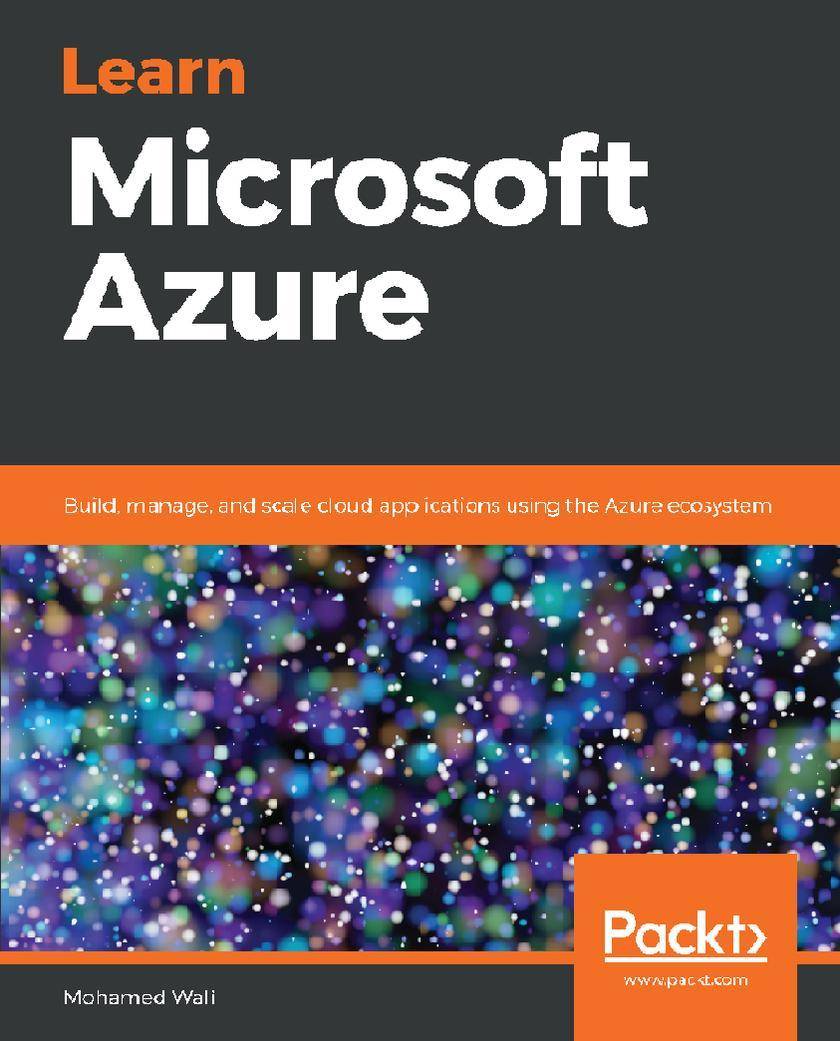
Learn Microsoft Azure
¥81.74
Explore various Azure services to build solutions that leverage effective design patterns Key Features *Create, deploy, and host cloud applications on Azure *Understand various Azure services that help you host serverless applications *Explore practical examples to help you secure and troubleshoot your cloud environment Book Description Azure is one of the leading public cloud service providers. Thanks to a number of Azure service updates, it continues to make advances in the realm of cloud computing. Learn Microsoft Azure starts with the fundamentals of cloud computing. You will learn to configure and set up the Azure infrastructure. As you make your way through the book, you'll explore Azure services, along with working on virtual memory systems (VMS) and deployment models. You will understand various services in the Azure ecosystem, such as Azure IoT and Azure Analytics, among others. An easy-to-follow introduction to various cloud design patterns will also add to your efficiency in designing cloud solutions. In the concluding chapters, you'll secure your virtual networks using Network security groups and configure Azure Active Directory (Azure AD) to set a custom domain name and company profile. By the end of this book, you will have learned to secure and troubleshoot your Azure cloud environment and be fully aware of best practices for Azure cloud administration. What you will learn *Understand the cloud services offered by Azure *Design storage and networks in Azure for your Azure VM *Work with web apps and Azure SQL databases *Build your identity management solutions on Azure using Azure AD *Monitor, protect, and automate your Azure services using Operation Management Suite (OMS) *Implement OMS for Azure services Who this book is for Learn Microsoft Azure is for administrators, cloud engineers, and developers who want to get started with using Azure as their cloud platform and build cloud-based applications for their enterprises.
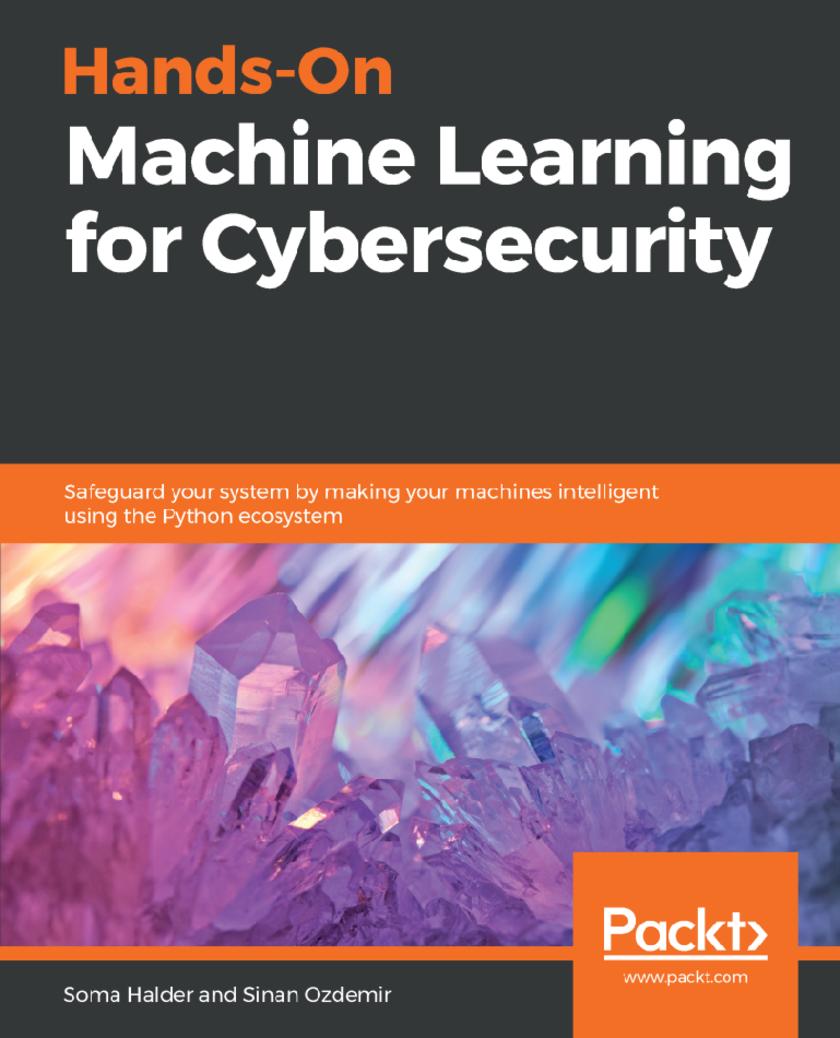
Hands-On Machine Learning for Cybersecurity
¥81.74
Get into the world of smart data security using machine learning algorithms and Python libraries Key Features *Learn machine learning algorithms and cybersecurity fundamentals *Automate your daily workflow by applying use cases to many facets of security *Implement smart machine learning solutions to detect various cybersecurity problems Book Description Cyber threats today are one of the costliest losses that an organization can face. In this book, we use the most efficient tool to solve the big problems that exist in the cybersecurity domain. The book begins by giving you the basics of ML in cybersecurity using Python and its libraries. You will explore various ML domains (such as time series analysis and ensemble modeling) to get your foundations right. You will implement various examples such as building system to identify malicious URLs, and building a program to detect fraudulent emails and spam. Later, you will learn how to make effective use of K-means algorithm to develop a solution to detect and alert you to any malicious activity in the network. Also learn how to implement biometrics and fingerprint to validate whether the user is a legitimate user or not. Finally, you will see how we change the game with TensorFlow and learn how deep learning is effective for creating models and training systems What you will learn *Use machine learning algorithms with complex datasets to implement cybersecurity concepts *Implement machine learning algorithms such as clustering, k-means, and Naive Bayes to solve real-world problems *Learn to speed up a system using Python libraries with NumPy, Scikit-learn, and CUDA *Understand how to combat malware, detect spam, and fight financial fraud to mitigate cyber crimes *Use TensorFlow in the cybersecurity domain and implement real-world examples *Learn how machine learning and Python can be used in complex cyber issues Who this book is for This book is for the data scientists, machine learning developers, security researchers, and anyone keen to apply machine learning to up-skill computer security. Having some working knowledge of Python and being familiar with the basics of machine learning and cybersecurity fundamentals will help to get the most out of the book
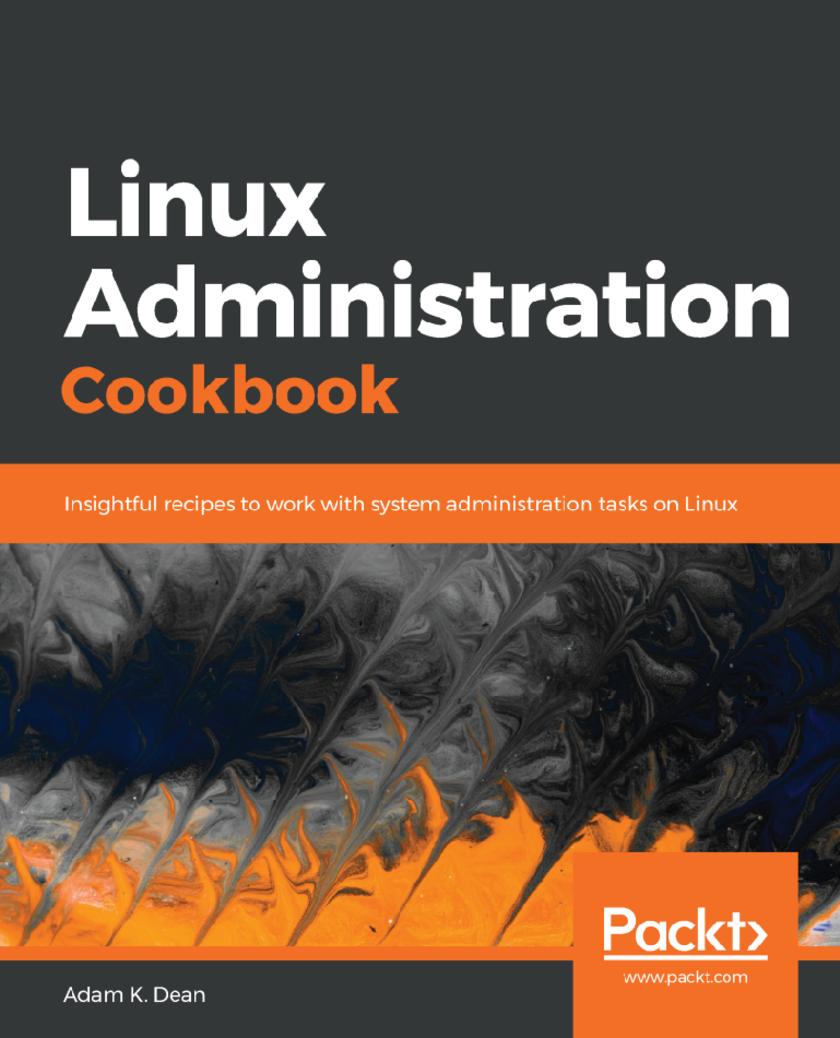
Linux Administration Cookbook
¥81.74
Over 100 recipes to get up and running with the modern Linux administration ecosystem Key Features *Understand and implement the core system administration tasks in Linux *Discover tools and techniques to troubleshoot your Linux system *Maintain a healthy system with good security and backup practices Book Description Linux is one of the most widely used operating systems among system administrators,and even modern application and server development is heavily reliant on the Linux platform. The Linux Administration Cookbook is your go-to guide to get started on your Linux journey. It will help you understand what that strange little server is doing in the corner of your office, what the mysterious virtual machine languishing in Azure is crunching through, what that circuit-board-like thing is doing under your office TV, and why the LEDs on it are blinking rapidly. This book will get you started with administering Linux, giving you the knowledge and tools you need to troubleshoot day-to-day problems, ranging from a Raspberry Pi to a server in Azure, while giving you a good understanding of the fundamentals of how GNU/Linux works. Through the course of the book, you’ll install and configure a system, while the author regales you with errors and anecdotes from his vast experience as a data center hardware engineer, systems administrator, and DevOps consultant. By the end of the book, you will have gained practical knowledge of Linux, which will serve as a bedrock for learning Linux administration and aid you in your Linux journey. What you will learn *Install and manage a Linux server, both locally and in the cloud *Understand how to perform administration across all Linux distros *Work through evolving concepts such as IaaS versus PaaS, containers, and automation *Explore security and configuration best practices *Troubleshoot your system if something goes wrong *Discover and mitigate hardware issues, such as faulty memory and failing drives Who this book is for If you are a system engineer or system administrator with basic experience of working with Linux, this book is for you.
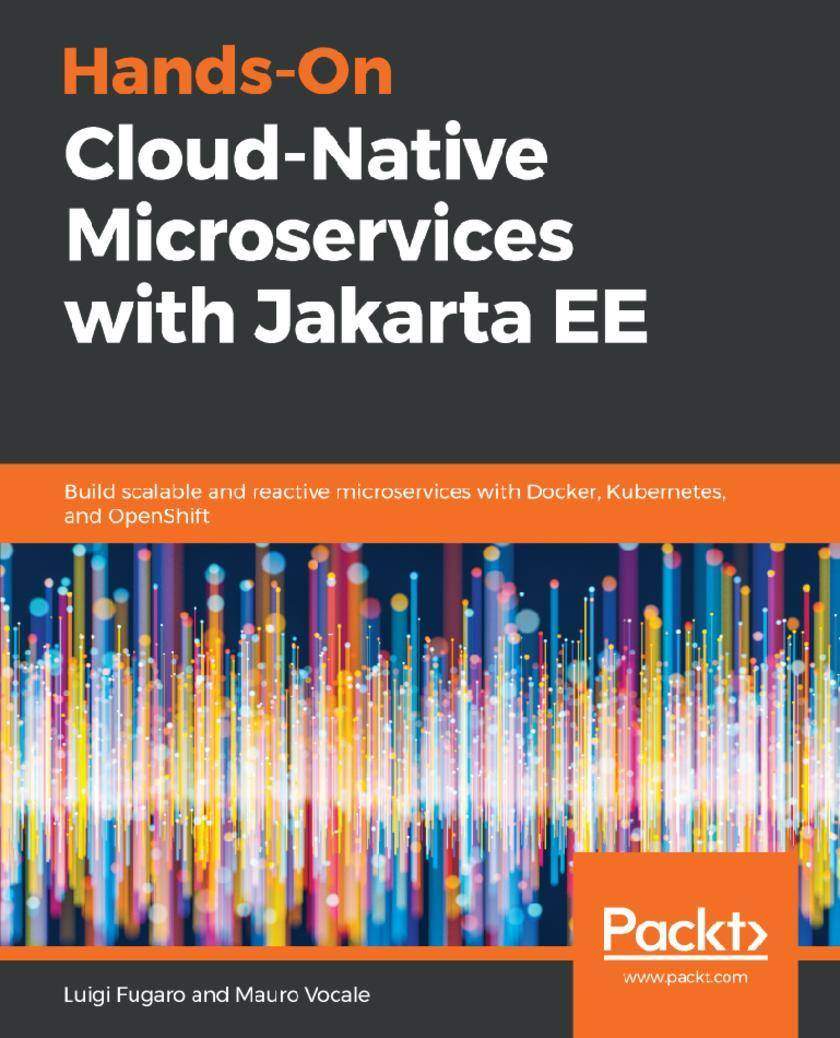
Hands-On Cloud-Native Microservices with Jakarta EE
¥81.74
Discover how cloud-native microservice architecture helps you to build dynamically scalable applications by using the most widely used and adopted runtime environments Key Features * Build robust cloud-native applications using a variety of tools * Understand how to configure both Amazon Web Services (AWS) and Docker clouds for high availability * Explore common design patterns used in building and deploying microservices architecture. Book Description Businesses today are evolving rapidly, and developers now face the challenge of building applications that are resilient, flexible, and native to the cloud. To achieve this, you'll need to be aware of the environment, tools, and resources that you're coding against. The book will begin by introducing you to cloud-native architecture and simplifying the major concepts. You'll learn to build microservices in Jakarta EE using MicroProfile with Thorntail and Narayana LRA. You'll then delve into cloud-native application x-rays, understanding the MicroProfile specification and the implementation/testing of microservices. As you progress further, you'll focus on continuous integration and continuous delivery, in addition to learning how to dockerize your services. You'll also cover concepts and techniques relating to security, monitoring, and troubleshooting problems that might occur with applications after you've written them. By the end of this book, you will be equipped with the skills you need to build highly resilient applications using cloud-native microservice architecture. What you will learn * Integrate reactive principles in MicroProfile microservices architecture * Explore the 12-factors-app paradigm and its implications * Get the best out of Java versions 8 and 9 to implement a microservice based on Thorntail * Understand what OpenShift is and why it is so important for an elastic architecture * Build a Linux container image using Docker and scale the application using Kubernetes * Implement various patterns such as, Circuit Breaker and bulkheads * Get to grips with the DevOps methodology using continuous integration (CI) and continuous deployment (CD) Who this book is for This book is for developers with basic knowledge of Java EE and HTTP-based application principles who want to learn how to build, test and scale Java EE microservices. No prior experience of writing microservices in Java EE is required.
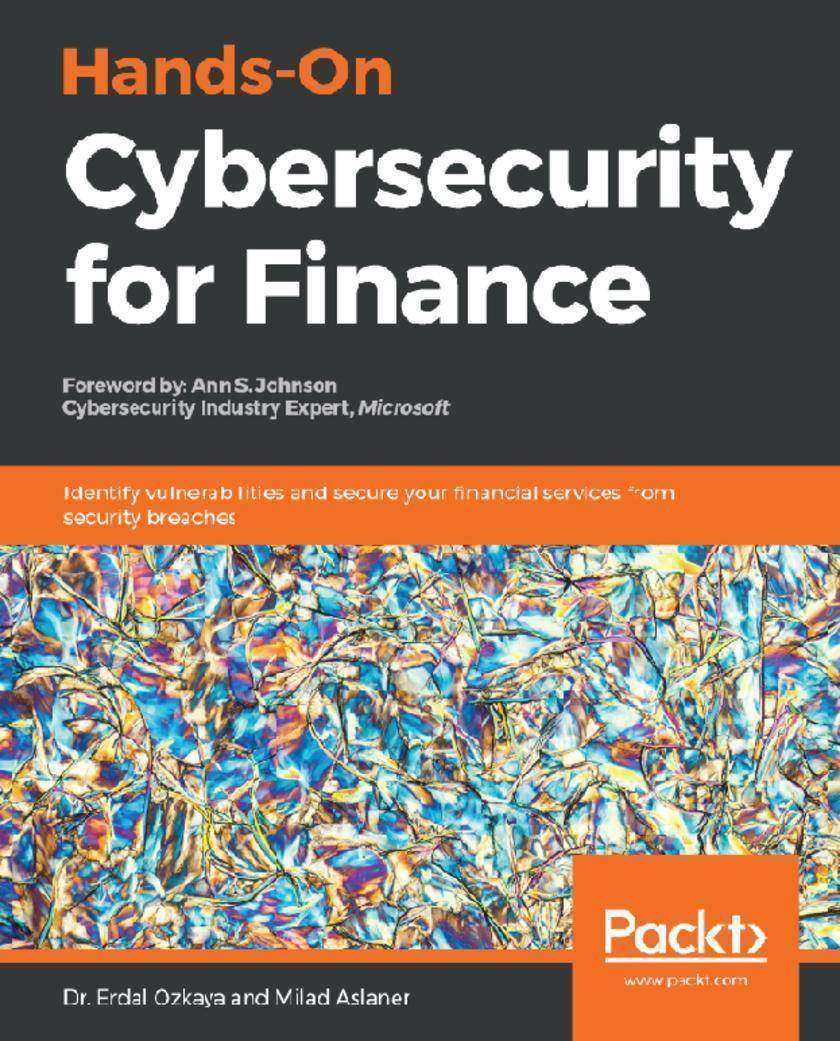
Hands-On Cybersecurity for Finance
¥81.74
A comprehensive guide that will give you hands-on experience to study and overcome financial cyber threats Key Features * Protect your financial environment with cybersecurity practices and methodologies * Identify vulnerabilities such as data manipulation and fraudulent transactions * Provide end-to-end protection within organizations Book Description Organizations have always been a target of cybercrime. Hands-On Cybersecurity for Finance teaches you how to successfully defend your system against common cyber threats, making sure your financial services are a step ahead in terms of security. The book begins by providing an overall description of cybersecurity, guiding you through some of the most important services and technologies currently at risk from cyber threats. Once you have familiarized yourself with the topic, you will explore specific technologies and threats based on case studies and real-life scenarios. As you progress through the chapters, you will discover vulnerabilities and bugs (including the human risk factor), gaining an expert-level view of the most recent threats. You'll then explore information on how you can achieve data and infrastructure protection. In the concluding chapters, you will cover recent and significant updates to procedures and configurations, accompanied by important details related to cybersecurity research and development in IT-based financial services. By the end of the book, you will have gained a basic understanding of the future of information security and will be able to protect financial services and their related infrastructures. What you will learn * Understand the cyber threats faced by organizations * Discover how to identify attackers * Perform vulnerability assessment, software testing, and pentesting * Defend your financial cyberspace using mitigation techniques and remediation plans * Implement encryption and decryption * Understand how Artificial Intelligence (AI) affects cybersecurity Who this book is for Hands-On Cybersecurity for Finance is for you if you are a security architect, cyber risk manager, or pentester looking to secure your organization. Basic understanding of cybersecurity tools and practices will help you get the most out of this book.

Mastering Ceph
¥81.74
Discover the unified, distributed storage system and improve the performance of applications Key Features * Explore the latest features of Ceph's Mimic release * Get to grips with advanced disaster and recovery practices for your storage * Harness the power of Reliable Autonomic Distributed Object Store (RADOS) to help you optimize storage systems Book Description Ceph is an open source distributed storage system that is scalable to Exabyte deployments. This second edition of Mastering Ceph takes you a step closer to becoming an expert on Ceph. You’ll get started by understanding the design goals and planning steps that should be undertaken to ensure successful deployments. In the next sections, you’ll be guided through setting up and deploying the Ceph cluster with the help of orchestration tools. This will allow you to witness Ceph’s scalability, erasure coding (data protective) mechanism, and automated data backup features on multiple servers. You’ll then discover more about the key areas of Ceph including BlueStore, erasure coding and cache tiering with the help of examples. Next, you’ll also learn some of the ways to export Ceph into non-native environments and understand some of the pitfalls that you may encounter. The book features a section on tuning that will take you through the process of optimizing both Ceph and its supporting infrastructure. You’ll also learn to develop applications, which use Librados and distributed computations with shared object classes. Toward the concluding chapters, you’ll learn to troubleshoot issues and handle various scenarios where Ceph is not likely to recover on its own. By the end of this book, you’ll be able to master storage management with Ceph and generate solutions for managing your infrastructure. What you will learn * Plan, design and deploy a Ceph cluster * Get well-versed with different features and storage methods * Carry out regular maintenance and daily operations with ease * Tune Ceph for improved ROI and performance * Recover Ceph from a range of issues * Upgrade clusters to BlueStore Who this book is for If you are a storage professional, system administrator, or cloud engineer looking for guidance on building powerful storage solutions for your cloud and on-premise infrastructure, this book is for you.

Kali Linux - An Ethical Hacker's Cookbook
¥81.74
Discover end-to-end penetration testing solutions to enhance your ethical hacking skills Key Features * Practical recipes to conduct effective penetration testing using the latest version of Kali Linux * Leverage tools like Metasploit, Wireshark, Nmap, and more to detect vulnerabilities with ease * Confidently perform networking and application attacks using task-oriented recipes Book Description Many organizations have been affected by recent cyber events. At the current rate of hacking, it has become more important than ever to pentest your environment in order to ensure advanced-level security. This book is packed with practical recipes that will quickly get you started with Kali Linux (version 2018.4 / 2019), in addition to covering the core functionalities. The book will get you off to a strong start by introducing you to the installation and configuration of Kali Linux, which will help you to perform your tests. You will also learn how to plan attack strategies and perform web application exploitation using tools such as Burp and JexBoss. As you progress, you will get to grips with performing network exploitation using Metasploit, Sparta, and Wireshark. The book will also help you delve into the technique of carrying out wireless and password attacks using tools such as Patator, John the Ripper, and airoscript-ng. Later chapters will draw focus to the wide range of tools that help in forensics investigations and incident response mechanisms. As you wrap up the concluding chapters, you will learn to create an optimum quality pentest report. By the end of this book, you will be equipped with the knowledge you need to conduct advanced penetration testing, thanks to the book’s crisp and task-oriented recipes. What you will learn * Learn how to install, set up and customize Kali for pentesting on multiple platforms * Pentest routers and embedded devices * Get insights into fiddling around with software-defined radio * Pwn and escalate through a corporate network * Write good quality security reports * Explore digital forensics and memory analysis with Kali Linux Who this book is for If you are an IT security professional, pentester, or security analyst who wants to conduct advanced penetration testing techniques, then this book is for you. Basic knowledge of Kali Linux is assumed.




 购物车
购物车 个人中心
个人中心



